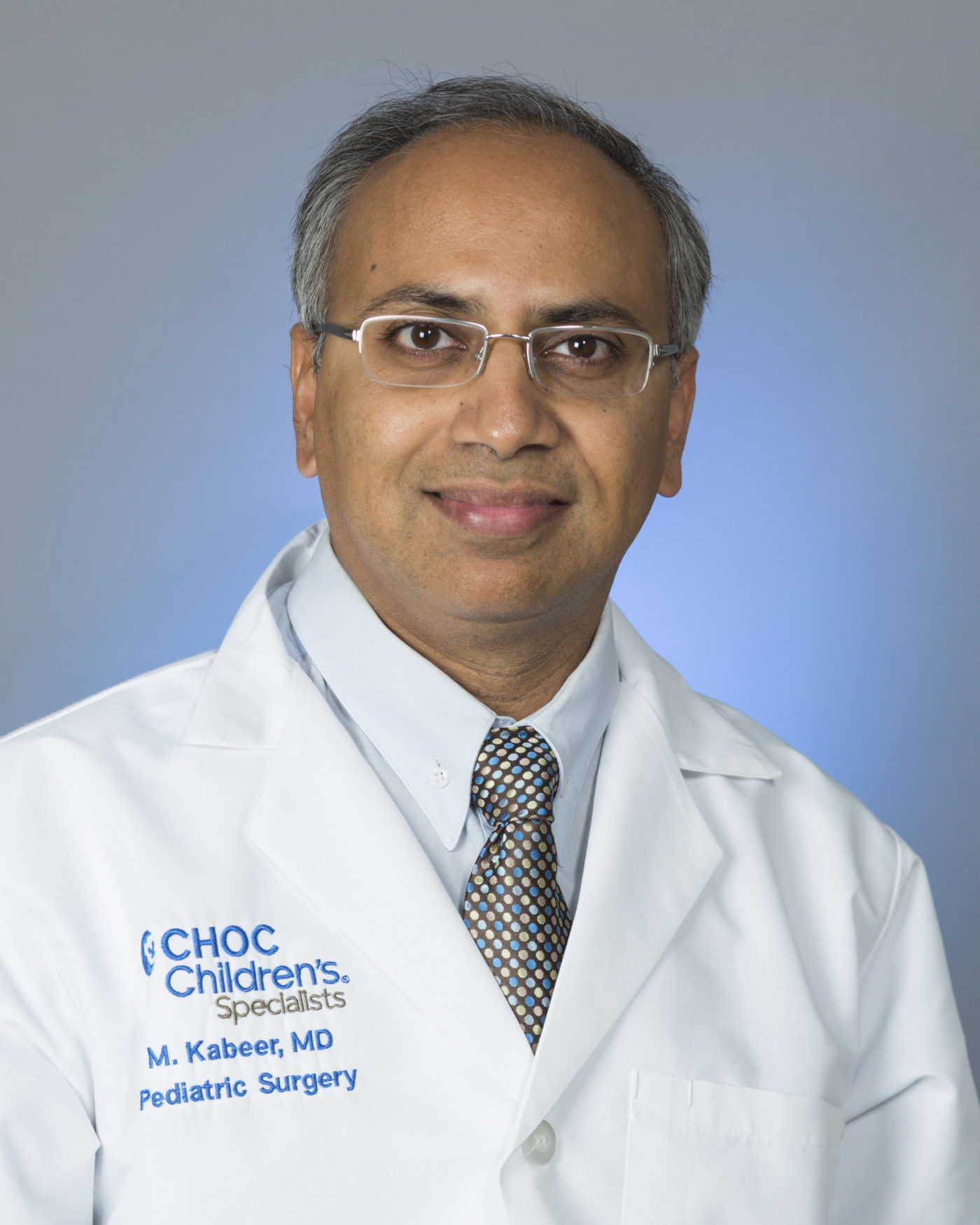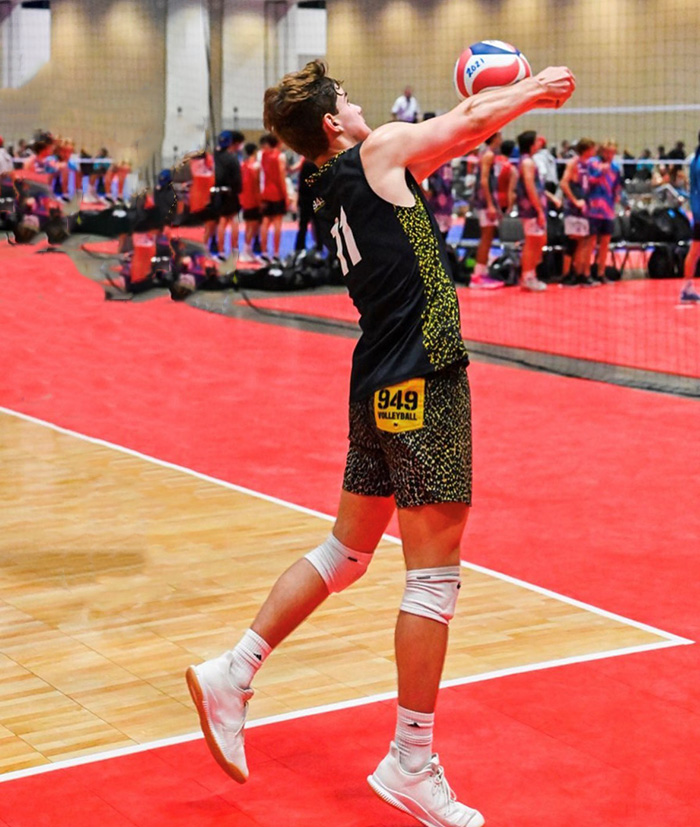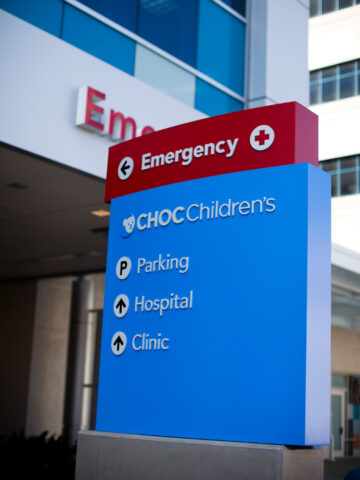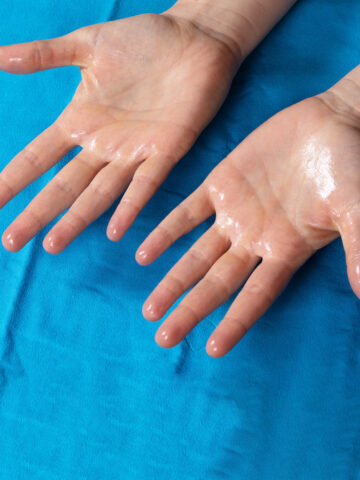Backed by a promising new study, a multidisciplinary CHOC team has developed a groundbreaking pain management protocol for surgery to correct pectus excavatum (PE), or “sunken chest,” that results in minimal postoperative pain and allows most patients (65%) to be discharged within a few hours after surgery.
The procedure involves using medication injected into the space next to the spinal nerve roots together with cryoablation – freezing the nerves with extremely cold nitrous oxide – for patients with the chest wall deformity.
Although this minimally invasive surgery was developed 25 years ago as the Nuss procedure, which has become the standard of treatment, it has been associated with severe and prolonged postoperative pain since it involves implanting a metallic bar in the chest cavity to reshape the bony sternum and ribs. The bar is left in place for three years and then removed.
Using advanced pain blocks and cryoablation together, as described in the paper published in February 2023 in the journal Pediatric Surgery International, dramatically improves recovery and decreases the need for narcotics for pain after surgery, says lead author and pediatric surgeon Dr. Mustafa Kabeer.

Since the publication of the paper, hospitals from around the country have been contacting CHOC, which is poised to become the West Coast leader in the surgical repair of PE, says Jacqueline Hurley, the Pectus Excavatum (PE) program coordinator at CHOC.
“This is a major accomplishment that we’ve achieved,” Hurley says.
CHOC patient is ‘very happy’ after Nuss procedure
PE affects about 1 in 400 people, mostly males. It’s caused when the breastbone and some ribs grow abnormally, creating a depression in the chest. It usually manifests during adolescence.
When severe, the depression can push down on the heart, making it hard for those affected to properly exert themselves. Symptoms include shortness of breath, difficulty breathing during exercise, chest pain, and episodes of light-headedness.
Brock Murphy, 18, a standout volleyball player and first-year student at Long Island University in Brooklyn, N.Y., underwent the Nuss procedure at CHOC on March 11, 2022, when he was a junior at Laguna Beach High School.

“When I woke up, I was shocked,” says Brock, who had PE and was noticing a decrease in stamina when he played volleyball. He elected to have the surgery out of concern for his long-term health. “Pain wise, it felt like somebody had rubbed a ton of Icy Hot over my chest. I couldn’t really feel pain – just a lot of pressure.”
Brock says he could have gone home the day of surgery but went home the next day, out of caution. He also opted for narcotics and stayed in bed for three days. But after two weeks, he wanted to resume volleyball. He started playing three months after surgery.
“I was very happy with the care I received at CHOC,” says Brock, who today feels only a bit of numbness in parts of his chest as his nerves continue to regenerate after being frozen. “They didn’t push surgery onto me. They let me make all the choices.”
Minimally invasive surgery for pectus excavatum
The pectus excavatum team at CHOC is comprised of experts in pediatric anesthesia, pulmonology, cardiology and surgery. The team performs various tests to examine heart and lung function before and after the minimally invasive Nuss procedure. Incisions are made along the sides of the chest. The historical technique, known as the Ravitch procedure, required a large incision across the chest.
The research paper, which Dr. Kabeer describes as a pilot study to assess the new treatment protocol, lists in addition to him 13 authors, all from CHOC.
The study involved patients who underwent the Nuss procedure at CHOC from 2016 through 2020. Eleven of 17 patients were discharged the same day as surgery. The remaining patients were discharged the following day with no complications or interventions.
“One of the patients left a few hours after surgery from the recovery room, which is pretty amazing,” Dr. Kabeer says.
The paper lays the foundation for a larger, multi-institutional study, he adds.
Feeling good
Brock says Dr. Kabeer and Jacqueline have been “amazing” in staying connected with him.
“They care about the longevity of their patients even after they leave the hospital,” Brock says. “They really care about you as a person and not just the medical side of things.”
Brock plans to resume playing Division 1 volleyball in the spring. He’s recovering from ACL surgery on his left knee after suffering an injury while playing volleyball in October.
Brock, an outside hitter who made the national team when he was 14 years old, is planning to go into nursing.
“I feel completely normal now and I have way more stamina,” he says.
Refer a patient to the pectus excavatum treatment program at CHOC
As a leading provider for pectus care, our pectus treatment program provides children with the best possible outcomes.




